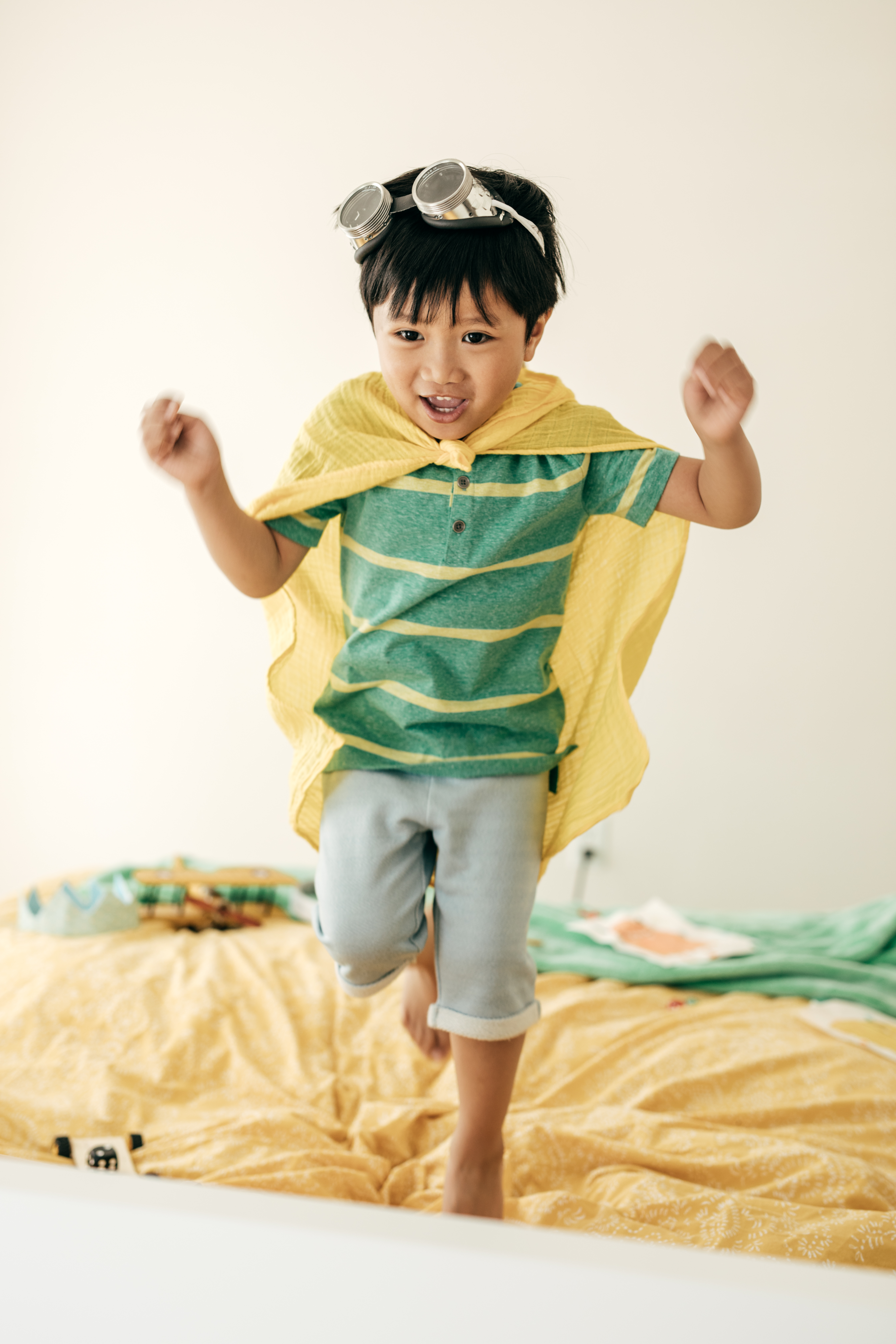What most babies do by this age:
Social and Emotional
- Enjoys doing new things
- Is more and more creative with make-believe play
- Would rather play with other children than alone
- Cooperates with other children
- Often can’t tell what’s real and what’s make-believe
- Talks about interests
Language/Communication
- Knows some basic rules of grammar, such as correctly using “he” and “she”
- Sings a song or says a poem from memory such as the “Itsy Bitsy Spider” or the “Wheels on the Bus”
- Tells stories
- Can say first and last name
Cognitive (learning, thinking, problem-solving)
- Names some colors and some numbers
- Understands the idea of counting
- Starts to understand time
- Remembers parts of a story
- Understands the idea of “same” and “different”
- Draws a person with 2 to 4 body parts
- Uses scissors
- Starts to copy some capital letters
- Plays board or card games
- Tells you what he thinks is going to happen next in a book
Movement/Physical Development
- Hops and stands on one foot up to 2 seconds
- Catches a bounced ball most of the time
- Pours, cuts with supervision, and mashes own food
WHAT FAMILIES CAN DO
- Play make-believe with your child – let him/her be the leader and choose what you will play.
- Set limits and be consistent with what your child can and cannot do.
- Say positive things to and praise your child and what he/she is doing.
- Give your child opportunities to play with other children.
- Let your child solve problems when playing with friends, but be nearby to help out if needed.
- Take time to answer your child’s “why” questions; show patience and be responsive to the questions and if you don’t know the answer, look it up together, ask your child’s thoughts or say you don’t know.
- Provide your child with toys that build imagination such as blocks, kitchen sets and dress-up clothes.
- Give your child simple choices whenever you can about what to wear, play, or have for snack.
- Count items at home such as crackers, steps or stuffed animals.
- Urge your child to use words to ask for help.
- Read to your child every day; ask him/her to tell you what happened in the story as you go.
- Say colors, sort items by color, shape or use such as, “Find all of the green blocks and make a tower.”
- Point out letters and numbers in signs and everyday objects, such as, “This sign has the number four in it and you are 4-years-old.”
- Play with balls while running and kicking.
- Teach your child to play outdoor games like tag, follow the leader and “duck, duck, goose.”
- Provide riding toys such as a trike, bike with training wheels or scooter.
- Put on your child’s favorite music and have a dance party; copy each other’s moves.

